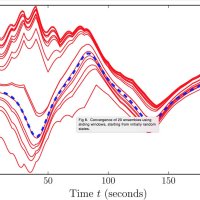Connecting every bit of knowledge
What is the shape of all knowledge? How has knowledge grown over time? Can we anticipate ways in which knowledge will grow? Knowledge is certainly hierarchically structured but it’s also richly scaffolded and networked with concepts and ideas linking within and across domains. We can attempt to answer some of these questions by computationally exploring the Network of …











